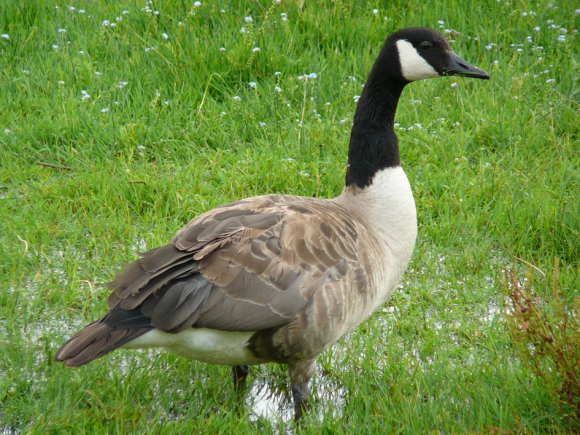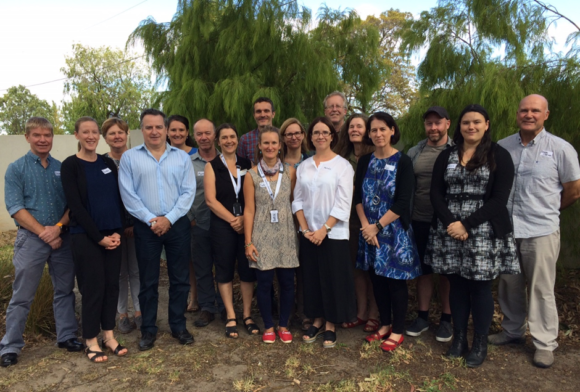15 September 2020 | By Sabrina Kumschick
On 15th September 2020 at the Neobiota conference, the Environmental Impact Classification for Alien Taxa – EICAT for short – was officially launched as a new Standard of the International Union for the Conservation of Nature (IUCN). Advantages of setting such standards are that data exchange within science and with stakeholders, and communication with the wider community are facilitated.
The aim of EICAT is to give environmental managers, scientists and conservation practitioners, as well as the general public, a better understanding of the magnitude of impacts caused by alien (introduced, non-native) taxa. This can feed into policy making and the development of legislation, as well as aiding the prioritisation of management of alien taxa.
A short video which can be found here explains the issues addressed.
The development of the EICAT protocol started in 2013 at a workshop in Leipzig and involved C∙I∙B members, including C∙I∙B Director David Richardson, C∙I∙B Core Team Members Sabrina Kumschick and John Wilson, C∙I∙B Associates Tim Blackburn, Petr Pyšek, Franz Essl, Anthony Ricciardi and C∙I∙B Research Fellow Sven Bacher. The aim of the workshop was to gain a better understanding of impacts caused by alien taxa, and of ways to predict them. Since this workshop, some major steps have been taken in getting EICAT to where it is now.
After the initial publication in a scientific journal (Blackburn et al. 2014), further guidelines were developed to help people to implement the method. These guidelines were based on the highly successful Red List of Threatened Species (www.iucnredlist.org) (Hawkins et al. 2015). EICAT has since been applied to classify the environmental impacts of aliens from a range of taxonomic groups (e.g. Hagen & Kumschick, 2018; Kesner & Kumschick, 2018; Evans et al. 2016), putting the protocol to the practical test. A few changes were recommended and implemented in the guidelines.
Up to this point, the implementation of EICAT was mainly an academic exercise. However, in order for a protocol to be accepted as a standard by IUCN, it had to go through a global participation process involving the IUCN network and other stakeholders, which includes NGOs, governments, and a wide range of other institutions. The feedback received in this process was highly supportive, and included helpful suggestions for further modifications to improve the method. Incorporating these improvements has resulted in the final IUCN EICAT Categories and Criteria, as well as the EICAT guidelines and reporting template.
“This success story shows the value of bringing scientists from diverse backgrounds and countries together to collaborate on protocols which can be applied to improve policy making and management at a global scale,” Sabrina Kumschick says.
For more information, contact Sabrina Kumschick at sabrinakumschick@sun.ac.za
References
- Blackburn TM, Essl F, Evans T, Hulme PE, Jeschke JM, Kühn I, et al. (2014) A Unified Classification of Alien Species Based on the Magnitude of their Environmental Impacts. PLoS Biol 12(5): e1001850. https://doi.org/10.1371/journal.pbio.1001850
- Hawkins et al. 2015. Framework and guidelines for implementing the proposed IUCN Environmental Impact Classification for Alien Taxa (EICAT). Diversity and Distributions. Volume 21, Issue 11. https://onlinelibrary.wiley.com/doi/full/10.1111/ddi.12379
- Hagen B & Kumschick S (2018) The relevance of using various scoring schemes revealed by an impact assessment of feral mammals. Neobiota 38: 37-75. https://doi.org/10.3897/neobiota.38.23509
- Kesner, D. & Kumschick, S. (2018). Gastropods alien to South Africa cause severe environmental harm in their global alien ranges across habitats. Ecology and Evolution https://doi.org/10.1002/ece3.4385
- Evans, T., Kumschick, S. and Blackburn, T.M. (2016). Application of the Environmental Impact Classification for Alien Taxa (EICAT) to a global assessment of alien bird impacts. Diversity and Distributions 22, 919-931. https://onlinelibrary.wiley.com/doi/full/10.1111/ddi.12464



